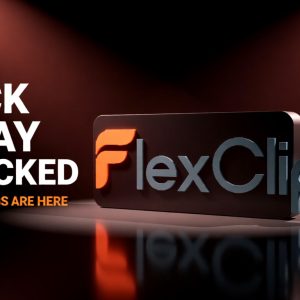Introduction to Blockchain Layers
Understanding the Layered Architecture
Blockchain is fundamentally a layered architecture, evolving from a single-tier model to a multi-layer system. This structure allows for distinctive functionalities at each level, catering to various needs without compromising the core principles of decentralization, security, and scalability. At its foundation, Layer 0 supports interoperability, while Layer 1 focuses on the base protocols, Layer 2 enhances scalability, and Layer 3 caters to application-specific needs.
Significance of Blockchain Layers in Web3 Development
The significance of blockchain layers cannot be overstated, especially in the emerging Web3 landscape. They enable developers to utilize: – Modularity: Create solutions that implement specific functionalities without affecting the entire blockchain system. – Interoperability: Enhance the ability for different blockchains to communicate and collaborate. – Scalability: Facilitate efficient handling of increasing transaction volumes, promoting broader adoption. Simplifying the complexities of blockchain technology through layering positions Web3 as a more navigable platform for developers and businesses alike, essential for driving innovation and user engagement in decentralized applications.
The Blockchain Trilemma and Layered Design
Exploring the Blockchain Trilemma
At the heart of blockchain design lies the infamous trilemma: the challenge of simultaneously achieving scalability, security, and decentralization. Each blockchain strives to find its sweet spot, yet no single solution has harmonized these three aspects perfectly. This ongoing struggle leads to vibrant conversations about innovative architectures and promising solutions in the community.
Role of Layered Design in Balancing Security, Scalability, and Decentralization
Layered design emerges as a strategic response to the blockchain trilemma. By isolating functions into distinct layers, developers can specialize each segment: – Layer 1 establishes strong security frameworks. – Layer 2 addresses scalability challenges without compromising the foundational integrity. – Layer 3 offers customization to cater to specific application needs. This approach not only balances the trade-offs inherent in blockchain design but also fosters a modular ecosystem. In this way, builders can adapt and innovate, ensuring that security, scalability, and decentralization evolve together in harmony.
Layer 0: The Foundation of Interoperability
Functionality of Layer 0 Protocols
Layer 0 serves as the bedrock of blockchain ecosystems, enabling seamless communication between different blockchain networks. By establishing a framework for interoperability, Layer 0 protocols like Cosmos and Polkadot facilitate data sharing and facilitate cross-chain interactions. This foundational layer allows diverse blockchain environments to join forces, driving innovation.
Components and Features of Layer 0 in Blockchain Ecosystem
The components of Layer 0 are crucial for its functionality: – Inter-chain Communication: Protocols such as Cosmos’s Inter-Blockchain Communication (IBC) enable disparate blockchains to interact safely without intermediary central authorities. – Shared Security: Many Layer 0 solutions provide security frameworks, allowing newer chains to leverage the established security of the underlying network. – Developer Frameworks: Layer 0 platforms offer toolkits like the Cosmos SDK and Substrate, making it easier for developers to build tailored ecosystems while maintaining interoperability. Layer 0 is essential for creating a resilient and cohesive blockchain landscape, ensuring various layers can operate in concert, significantly enhancing user experience across Web3 applications.
Layer 1: Fundamental Base Protocols
Overview of Layer 1 Networks
Layer 1 networks are the backbone of the blockchain ecosystem, comprising well-known platforms like Bitcoin, Ethereum, Solana, and Avalanche. These foundational protocols are responsible for: – Consensus Mechanisms: Establishing trust among participants through decentralized validation of transactions. – Settlement and Block Validation: Ensuring transactions are recorded on the blockchain securely and immutably. Layer 1 establishes the essential elements for secure and decentralized transactions, forging the path for Web3 development.
Use Cases and Limitations of Layer 1 Networks
While Layer 1 networks showcase robust security and decentralization, they come with both advantages and limitations: Use Cases: – Digital Currencies: Bitcoin serving as a store of value. – Smart Contracts: Ethereum allowing the creation of decentralized applications (dApps). – DeFi Platforms: Networks like Solana enabling high-frequency trading and financial services. Limitations: – Scalability Issues: High transaction volume can impact speed and increase fees. – Gas Fees: Historically high costs, especially during network congestion. – Rigidity: Difficulty in making upgrades or implementing hard forks. Layer 1 networks set the stage, but as traffic escalates, the demand for more scalable solutions gives way to the innovations found in Layer 2 protocols.
Layer 2: Enhancing Scalability with Off-chain Solutions
Introduction to Layer 2 Scaling Protocols
After establishing a solid foundation with Layer 1 networks, scalability issues began to surface as transaction volumes soared. Layer 2 scaling protocols emerged as innovative solutions, designed to alleviate the execution burden from layer 1, thereby enhancing overall network speed and performance. By processing transactions off-chain, these protocols promise lower costs and faster confirmations.
Types of Layer 2 Scaling Solutions and Their Features
Layer 2 encompasses various technologies, each serving different use cases: – Optimistic Rollups: These assume that transactions are valid and can be challenged if fraudulent. They allow faster processing and are easy to integrate with existing Layer 1 blockchains. – ZK-Rollups: Using zero-knowledge proofs, these solutions batch and validate numerous transactions simultaneously, enabling sub-second finality and reduced gas fees. – State Channels: Ideal for payment scenarios, state channels enable users to conduct multiple transactions off-chain before settling the final state on Layer 1, significantly cutting fees and latency. Layer 2 protocols are rapidly transforming the blockchain landscape by empowering scalability without compromising security or decentralization, providing a robust pathway for the increasing demand in Web3 applications.
Notable Examples and Impact of Layer 2
Analysis of Arbitrum, Starknet, and Polygon zkEVM
Layer 2 solutions have revolutionized blockchain scalability, and notable examples such as Arbitrum, Starknet, and Polygon zkEVM showcase their capabilities: – Arbitrum: Widely acknowledged for enhancing Ethereum’s throughput, Arbitrum effectively processes a large share of DeFi transactions with significantly reduced gas fees while maintaining security through optimistic rollups. – Starknet: Utilizing zero-knowledge proofs, Starknet achieves rapid transaction confirmations, participating heavily in the growing decentralized application ecosystem by offering scalability through ZK-Rollups. – Polygon zkEVM: This solution combines Ethereum compatibility with zk-Rollup technology, providing application-specific environments that support high-throughput transactions at lower costs and facilitating a smoother user experience. These Layer 2 ecosystems highlight the trend toward enhanced scalability while boosting decentralized applications across the board.
Advantages and Challenges of Layer 2 Solutions
Layer 2 solutions offer several benefits and challenges: Advantages: – Scalability: They significantly increase transaction throughput, allowing blockchains to handle more users and applications. – Lower Costs: By reducing gas fees, they enhance affordability for users engaged in decentralized finance (DeFi) and other transactions. – Enhanced Speed: Faster transaction confirmations improve user experience and efficiency on the network. Challenges: – Liquidity Fragmentation: Users may encounter issues when navigating between Layer 2 and Layer 1 ecosystems. – Centralization Risks: Some Layer 2 designs, such as those relying on sequencers, may pose potential centralization concerns. – Withdrawal Delays: Users may face extended periods before they can access funds when transitioning between layers, particularly with optimistic rollups. In summary, while Layer 2 solutions drive scalability and usability, navigating their complexities remains essential for users and developers alike.
Layer 3: Specialized Application-Specific Chains
Definition and Functions of Layer 3 Chains
Layer 3 represents the latest evolution in blockchain architecture, where specialized chains cater to distinct application needs. Unlike general-purpose chains, Layer 3 networks are tailored to optimize performance for specific functionalities—such as gaming, social media, or enterprise applications. By focusing on particular use cases, they deliver enhanced performance and lower transaction fees for users. – Custom Execution Environments: These chains fine-tune execution logic and privacy settings, ensuring applications can run seamlessly. – Interoperable Solutions: Functioning in tandem with Layer 2, Layer 3 chains leverage the security and scalability of underlying networks.
Examples of Custom Virtual Machines and App-Specific Rollups
Several projects exemplify the potential of Layer 3: – Immutable zkEVM: Optimized for decentralized gaming and digital assets, it provides a streamlined environment for high-frequency transactions. – Degen Chain: This specialized chain caters to niche crypto activities, processing millions of daily transactions efficiently. – Orbs: A robust platform supporting cross-chain execution, suitable for various DeFi applications while maintaining low costs. Layer 3 chains point to a modular future in blockchain, where applications can harmonically co-exist and thrive in a dynamic ecosystem tailored to their unique demands.
Interdependence of Blockchain Layers
Understanding the Interconnected Relationship among Layers
Each blockchain layer—Layer 0, Layer 1, Layer 2, and Layer 3—plays a significant role in supporting the overall architecture. This interdependence ensures that: – Layer 3 relies on Layer 2 for enhanced scalability. – Layer 2 requires Layer 1 to maintain security and consensus. – Layer 1, in turn, depends on Layer 0 to achieve interoperability across diverse blockchain ecosystems. Each layer is a cog in a well-oiled machine, instrumental in improving usability and functionality within the blockchain world.
Importance of Layer Integrity for Blockchain Functionality
Maintaining the integrity of each layer is crucial for the blockchain’s functionality. If one layer faces disruptions or inefficiencies, it can cascade throughout the system, leading to: – Decreased Performance: A bottleneck in Layer 2 can hinder scalability and user experience. – Security Risks: Vulnerabilities in Layer 1 can compromise security across the entire stack. – Loss of Interoperability: Issues in Layer 0 can isolate networks, stifling innovation and collaboration. This interconnectedness emphasizes the need for robust architecture in blockchain designs, ultimately driving the future of decentralized applications.
Conclusion: Embracing Modular Blockchain Development
Shifting Towards a Modular Blockchain Future
As blockchain technology continues to evolve, the movement towards modularity becomes increasingly apparent. Each layer, from Layer 0 to Layer 3, is designed to operate in harmony, solving specific challenges: – Layer 1 provides robust security. – Layer 2 enhances scalability. – Layer 3 focuses on custom applications. This modular architecture not only optimizes performance but also fosters innovation.
Strategic Implications for Web3 Development and Beyond
The adoption of a modular approach has profound implications for developers and businesses in the Web3 space. It enables: – Tailored Solutions: Developers can create specialized applications without reinventing the wheel. – Collaborative Ecosystems: Enhanced interoperability encourages collaboration across different protocols and platforms. – Agile Development: With modular designs, updates and improvements can be made to specific layers without impacting the entire system. As we transition into this modular future, understanding and leveraging the strengths of each layer will be crucial for driving the next generation of decentralized applications and infrastructures.






























